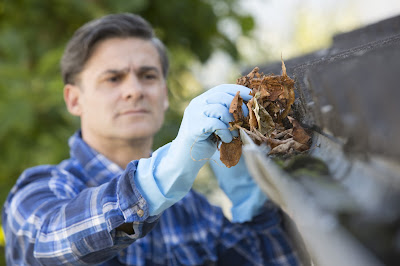Tis’ the season for snow-capped roofs, cozy nights by the
fireside and holiday festivities. During the winter season, many homeowners
will look to their roof for some DIY hanging of holiday lights. Here are a few
things to keep in mind before the merriest season becomes more like a scene worthy
of the name of Clark Griswold.
Preparation
Make sure
that you check all of the lights before you get on the roof. If there are
individual bulbs that will not light up, consider replacing the whole string as
opposed to the individual unit. This will ensure that other bulbs will not go
out in the process of replacing the single bulb. Know what type of lights you
would like to use and on what parts of the roof. Icicle lights should be strung
closer together, too much distance and their special, charming effect will be
lost. Traditional LED incandescent lights should be spaced farther apart as their
cozy effect already emits a homey quality.
Map Your Route
Have a plan
before you get out a ladder and lights. In the long run, this will save not
only time but headache as well. Knowing which color and type of lights you are
going to put on what parts of your roof will make for a swift and easy install.
Installation
Do not set your lights too far
back on the roof. Not only will it diminish the effects of the lights but
extending beyond your arm’s reach could open you up to possible safety issues.
We at Kaufman Roofing suggest using all-in-one clips to secure the lights to
your roofing system. Using nails or staples could possibly damage the roof or,
if nothing else, void the manufacturer’s warranty.
Safety
Hands down
the most important aspect of any roofing job is the attention to safety,
especially during the winter months. The most common roofing-related injury
seen by doctors occurs during the installation and take-down of holiday lights,
and most could’ve been easily avoided by taking a few tips into consideration.
Be vigilant in paying attention to the weather and only install when it is at
its best. Use the buddy system! No matter the roofing project, always work with
another person, this way, everyone’s safety is the #1 priority. Know how to
properly operate your ladder as well as the safest way to climb up and down. Make
sure the feet of the ladder are anti-slip and are properly stabilized against
the ground. Always secure your ladder to the roof, not the gutters, to ensure
slipping will not occur. This measure will also protect your gutter system from
unintentional damage. Do not place your ladder on icy or wet patches of ground.
Even a wet patch can become dangerously slippery in a matter of minutes.
~ Meghan Beck
~ Meghan Beck




